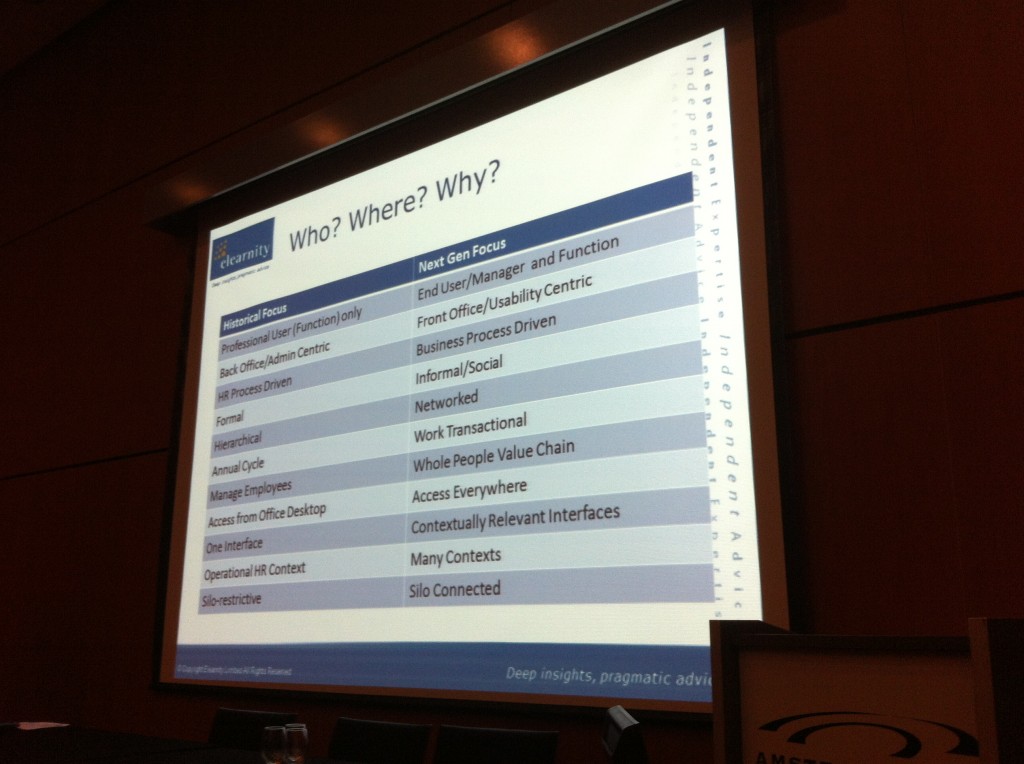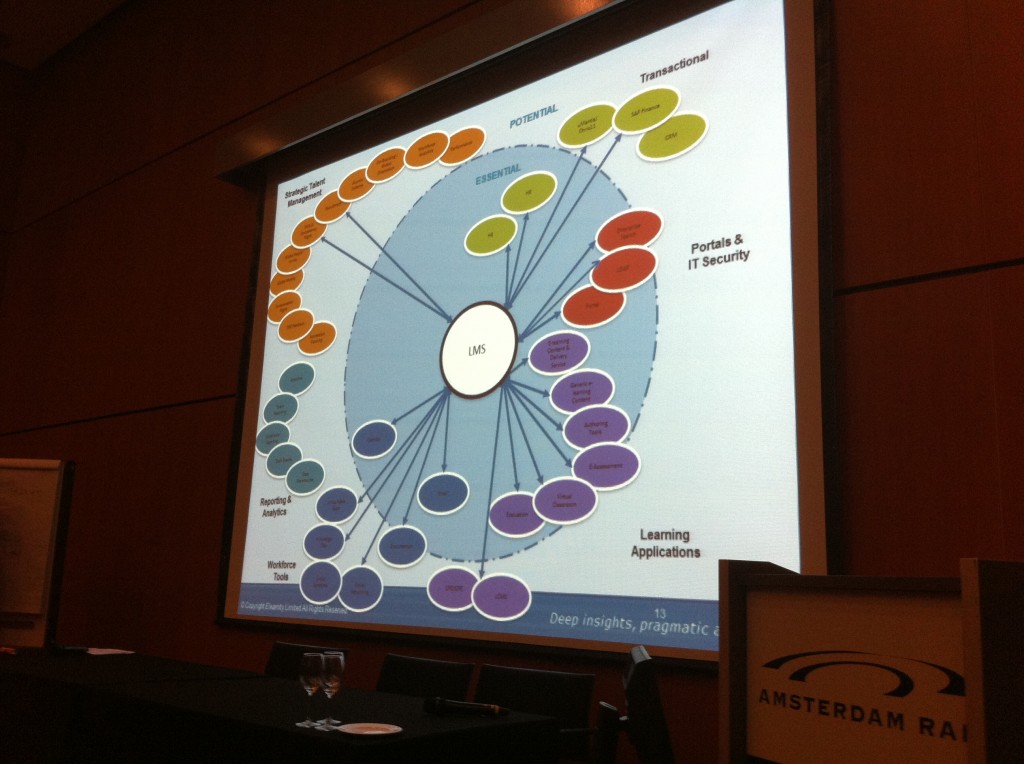David Wilson of analyst elearnity told delegates at the HR Tech Europe conference that integration is hot in talent management systems but the reality is most people have multiple systems to do the same things. The challenge is shifing towards a more integrated approach.
Wilson shared research findings to show that organisations have a level of dissatisfaction with their talent systems.
He showed some feedback to show reasons for the dissatisfaction:
- “We are on our third LMS within last 7 years”
- “We chose a Rolls Royce and deployed a Lada”
- “Our solution was chosen by IT who said it would meet our needs. It doesn’t.”
Underlying this is a basic problem and that is a silo’d way of organising our tech – in terms of process, organisation, systems, partners and suppliers. A best of breed platform for every system has led to patchwork of systems, he said.
There has also been a separation of transactional HR and transformational talent. If you are looking at a next generation talent system then you need to consider some big shifts, Wilson told delegates.
- The user – and how they are adopting the tech
- The Functional value and connected value of the system
- Operating model and agility – organise people to deliver the system
- Solution strategy
- Deployment model
Wilson put up this slide to demonstrate where our historical focus has been versus where it needs to be for the next generation.
He urged delegates to look at the functional scope and value of the system you are looking to choose. How will it work across performance management and recruitment, for example.
Cloud based is now the priority for many vendors but there re challenges around that in the organisation. Vendors in the SaaS space are winning, they a have the money, he said.
Integration is the big challenge. Wilson showed the complexity of the process:
Integration challenge is huge, he said. Learning, talent and workforce application integration is key to make all three a business process.
In summary, he said:
- You will need a revolution and evolution to develop next ten talent systems
- The start is to deliver UX that embeds talent processes into work process, not an HR island
- Best of breed solutions have good reasons but they increase cross-silo complexity
- Cloud is driving innovation in systems
- Major talent suppliers are focused on suite-based strategies – they need to compete band give value in the silos
- Talent cloud economics will drive core HRMS change and threaten ERP HC investment
Finally, he said that on-premise technology strategy has to adjust to cloud strategy and to keep pace to deliver competitive advantage. But he warned that companies must not lose the transformational value the silos bring when going for a single talent system.
[Picture credit: Mattox]






